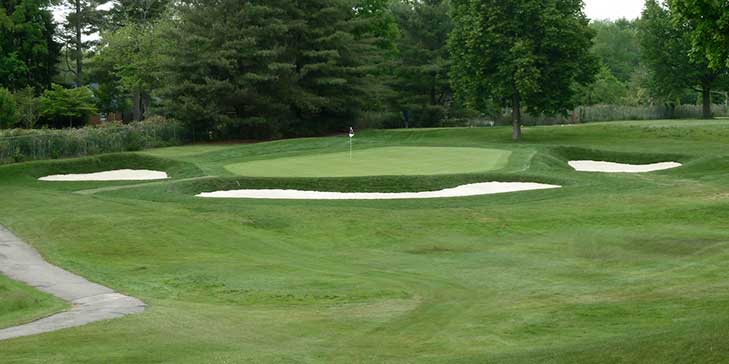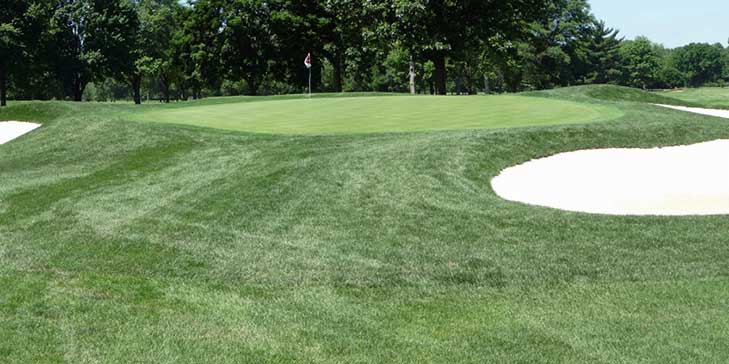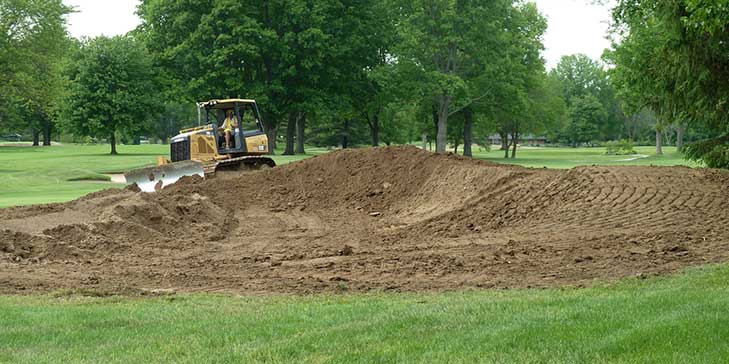The first phase of a restoration and renovation project at the Highland Golf and Country Club course in Indianapolis, US, has been completed.
Ron Kern of the Golf Design Group firm developed a masterplan for the club in 2008, with a view to restoring the original design, which was drawn up by Willie Park Jr. and Bill Diddel in 1919.
As part of Kern’s work, he examined and evaluated the original design and, writing in a blog post on his website, said: “The existing putting greens and the slopes of the surfaces in concert with the original bunkering scheme revealed a golf course design by Park and Diddel that was nothing short of exceptional.”
Kern designed final construction plans for a bunker remodeling project in late 2013, and work took place to complete this phase in the spring of 2014.

The first phase of the project has seen the replacing of existing bunkers into proper positions and form, while the second phase will see the addition of bunkers that were previously removed.
In the early 1990s, work was carried out to remove all traces of the original bunkering, thus altering the strategy of the course and taking it away from that of its original design.
“The new bunkers are constructed with respect to the character and in the spirit of the original golf course design by Willie Park Jr. and Bill Diddel,” said Kern. “The bunkers are formed by mounding that melds into the original construction or the surrounding natural ground. Bill used to say that he wanted his golf features to appear that they were created by the forces of nature, they were not to look artificial, even though they were indeed manufactured by man and machine. The proposed bunkering strategy was adjusted to relate to the contemporary game with respect to the fact that the golf course’s priority usage is member/guest play.”

Kern believes that in terms of appearance, the newly-constructed bunkers are far more in keeping with the period of the original construction and feature lower sand lines on gentler slope that work into steeper grass faces.
The bottoms of the bunkers are gently concave, helping to better facilitate drainage and improve aesthetics, and the rolling perimeter mounding around the bunkers are of variable heights, sizes and slopes.
“When designing and constructing the new bunkers in putting green complexes, I maintained all existing original contours in the green surrounds,” said Kern. “All construction work melded into these existing features such that all new features are in character with the golf course’s original design and construction.”

The construction project was led by Ryan Baldwin, Highland’s director of Agronomy and Facilities, and his A-1 crew. Duininck Golf constructed the bunkers, while construction superintendent Paul Deis ensured that the project was completed in a professional manner.
“Rich Quisberg and Derek Dirksen, shapers of exceptional skill, took the plans and field direction and formed the bunkers as designed, melding them into adjacent features and the existing ground, making them appear as if the bunkers had always been in place,” explained Kern. “The finish crew provided the ‘icing on the cake.’ They performed incredibly detailed work that resulted in features that drained perfectly and had the character and form that the design required.”
The Better Billy Bunker system was used for the bunker drainage and floors, something Kern described as being ‘perfect for our application’ and exceeding his expectations.
“It is a pleasure and a privilege to work with Highland Golf and Country Club to improve and restore their golf course,” Kern added. “They are a terrific club to work for.”